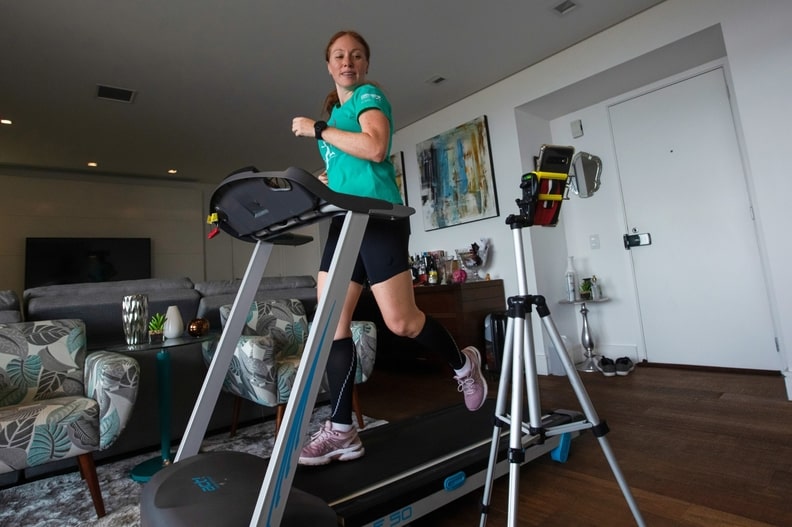Sourced from Crain’s Chicago Business
Influencers can often produce content faster and more cheaply than a TV ad campaign team, helping brands adapt faster as consumer circumstances change. Italian pasta company Barilla, whose U.S. headquarters is based in Northbrook, is a case in point.
The great pullback in advertising budgets hasn’t been evenly distributed. Spending on platforms such as Facebook Inc.’s Instagram and ByteDance Inc.’s TikTok is down, even for influencers, just not as much as traditional media.
It’s partly about following the consumer. There’s not a lot of motivation to freshen up a billboard when streets are so empty. Cinema screens are dark, and there are hardly any commuters to read the free newspapers handed out at rail stations. However, social media usage has surged.
It’s also important to change the content of a campaign to reflect the reality of life under lockdown. For example, standard ad campaigns featuring carefree, optimistic people mixing freely outdoors are on the back burner in a post-virus world marked by job insecurity, health fears and uncertain prospects.
Influencers can often produce content faster and more cheaply than a TV ad campaign team, helping brands adapt faster as consumer circumstances change.
Italian pasta company Barilla, whose U.S. headquarters is based in Northbrook, is a case in point. A year ago, the brand was wooing consumers with a glossy television spot which showed tennis champion Roger Federer cooking its spaghetti at a mansion reception with top chef Davide Oldani.
To craft a more appropriate message for their locked-down audience, Barilla’s marketers looked to social media star Chiara Ferragni, whose portraits modelling red-carpet dresses and pool-side leisurewear have drawn 20 million Instagram followers.
Recently, she’s been showing off her homemade Barilla spaghetti dinners instead.
“One of the reasons brands use influencer marketing in this moment is that it’s fast to activate and solved the issue of production that was on halt,” said Alessio Gianni, the company’s digital and content marketing director. “Content is more spontaneous, close to the people. Chiara, being Italian and locked at home as everyone else, cooked herself a carbonara. It was the best person to involve.”
Europe’s biggest pay-TV provider, Sky, has enlisted Dentsu Aegis influencer agency Gleam Futures to promote shows and movies to homebound families. Parenting Instagrammer Louise Pentland posted pictures to her 2.4 million followers showing her children contentedly watching “Trolls World Tour,” made by Sky’s parent Comcast Corp.
Sky is using digital channels like Instagram and getting near real-time feedback in a way it hasn’t before, said Dentsu’s Sinclair.
“Whereas once it might have been very much about the brand and the content, now it’s very much about the experience you have within your isolation,” she said.
Influencers were a rare bright spot in M&C Saatchi’s April market update, which cited “steady” business in the newer channel despite “a sharp drop in demand across the group.”
S4 Capital Plc’s CEO, Martin Sorrell, said some European clients started to change their thinking on influencer marketing that month, accelerating a digital transformation of advertising that was already underway. S4’s IMA agency has picked up work on an influencer campaign to promote HP Inc. laptops.
“We certainly saw that on the influencer side—so whereas I think it was pretty dead in the back-end of March, it got pretty lively as we got into April,” he said.
Influencer marketing can still be a minefield given how easily a brand campaign can appear cynical and turn off followers. With billions of people tiring of lockdowns and worried about coronavirus, companies can’t look like they’re seeking to profit from a miserable situation.
“A lot of the feedback the influencers receive from their audiences is: ‘How can you go on like everything is normal, saying to buy this candle, or this make-up?” said Robert Levenhagen, CEO of marketing software company InfluencerDB.
That’s limiting any boost the medium can receive from the current situation. M&C Saatchi’s Thompson said lots of social media stars are shunning commercial ventures in favor of charity and community work.
It’s taken years to convince many companies that there’s as clear a return on investment in influencers compared to TV or other forms of digital advertising. It’s been easy for influencers to buy “fake followers” and generate artificial engagement activity, making it hard to assess their true audience reach and impact.
There’s always the risk they’ll do something dumb that gets a company all the wrong kind of publicity. That’s made some traditional brands reluctant to jump in, according to Hayley Brady, a partner at Herbert Smith Freehills who advises companies on digital advertising.
In 2015 Kim Kardashian promoted a morning sickness treatment but failed to mention its side-effects, earning a reprimand from the FDA. Then there’s the bad behavior: YouTube star Logan Paul lost advertisers in a controversy sparked by posting a crude video which showed a dead body in a Japanese forest known for suicides.
Still, the ability of influencers to pivot quickly to match popular sentiment is what’s boosted their appeal for some brands in the current environment. This bodes well for their outlook when the worst of the pandemic is in the past.

